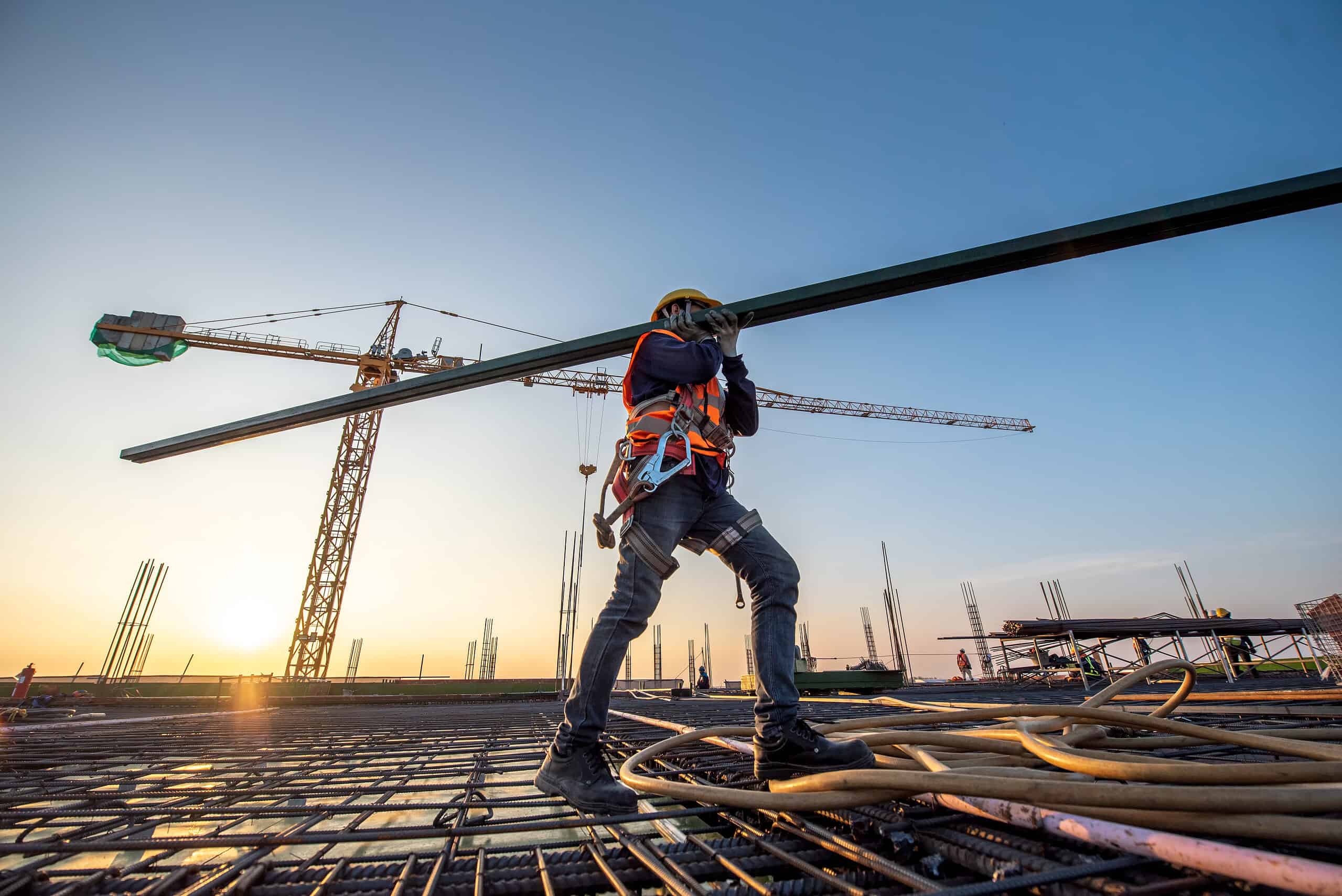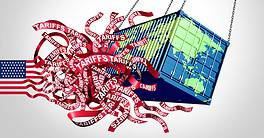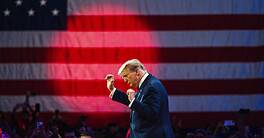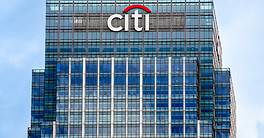Can companies realistically pivot their manufacturing based on policy winds, or is this strategy more complicated than policymakers suggest?
As trade tensions escalate under US President Donald Trump, the reshoring narrative is becoming more complicated. While companies across virtually all industries once embraced the idea of bringing manufacturing closer to home—driven by pandemic-era lessons and shifting geopolitical alliances—a new wave of tariffs, market instability, and lingering cost concerns is muddying the waters.
“We know of a number of clients who paused their reshoring plans due to the speed of change for the tariff landscape in the second quarter of this year,” says Jonathan Todd, a partner at the Cleveland-based business law firm Benesch.
What started as a strategic conversation quickly became tactical. CEOs and CFOs, once confident in their playbooks, were now focused on managing cost volatility and nervous about making the wrong move.
“There’s cautious optimism among clients, but most remain in a wait-and-see posture.”
Jonathan Todd, partner at Benesch
Earlier this year, Benesch began hearing a familiar refrain from manufacturers: Plans were underway to ramp up US production.
Many had already started shifting supply chains during and after Trump’s first term, favoring nearshoring and “friendshoring” strategies that prioritized geographic and political proximity. At the time, Canada and Mexico overtook China as top US trading partners, recalls Todd.
“The reshoring theme of this administration was in part a further development out of that exercise in shifting global supply chains,” Todd says.
But The Optimism Didn’t Last
For some, that sentiment changed with the April 2 announcement of “reciprocal tariffs,” which “targeted some of those friendshoring countries to which supply chains moved,” Todd explains. Trump announced a universal tariff, starting at 10%, on all imports, along with higher tariffs on countries like China and Vietnam with large trade deficits. Aimed at countering what the administration called unfair trade practices, the move sparked global market turmoil, triggering stock drops and fears of a global recession.
As a result, reshoring is back in the spotlight for both an unpredictable US and an extra-cautious Europe, which responded with its own homegrown manufacturing renaissance. Some firms—on both continents—are forging ahead, seeing opportunity in the volatility. Others, spooked by fickle policy and thin margins, are holding back or doubling down on existing overseas relationships. The result is a reshoring push that is uneven, reactive, and far from guaranteed.
‘None Of These Is Written In Stone’
After Trump’s April 2 so-called “Liberation Day” announcement, tariffs on Chinese imports surged—some as high as 145%—and China retaliated with duties of up to 125% on US goods. Confusion reigned.
One of those caught in the policy crossfire was Lee Evans Lee, founder and CEO of Texas-based fashion brand Mrs Momma Bear.

“I’m in a really exciting growth period,” Lee tells Global Finance. “So now you throw tariffs on top of that?”
In lower-margin industries like apparel, smaller firms rely on offshore production and point to high labor costs, domestic talent gaps, entrenched supply chain dependencies, and partnership loyalties—particularly in China—as reshoring deal-breakers. The economics of it simply don’t work.
As the tariff spat with China escalated, Lee huddled with her manufacturing partner Lever Style, which is based in Hong Kong. In addition to Mrs Momma Bear, this fashion supply chain firm works with some of the world’s biggest brands, including Hugo Boss, Ralph Lauren, and Uniqlo. As she recalls, one colleague held up the day’s newspaper with the bold headline on Trump’s tariff threat.
“Throw it away,” Lee told her colleague. “None of this is written in stone. I’m not going anywhere. I’m not changing any of the orders I’ve placed.”
Sticking with her existing supply chain was a risk—but one Lee was willing to take. “We don’t know what the markets are going to do,” she said. “But when everyone else pulls back, that might be our advantage. We’ve got a superior product—ultrahigh quality—and we’re standing firm on that.”
Her instincts were right. The administration ultimately pulled back: Trump retreated on the harshest tariff threats. Today, US duties on Chinese goods remain elevated at a combined 55%—a 30% blanket tariff plus the prior 25% on specific product categories.
Still, the whiplash left its mark. “A lot of people reacted to [tariffs] with fear,” says Lee.
When Tariffs Open Doors
But not every company is taking a defensive stance. Some, like KULR Technology Group, see the disruption as an opening to scale. Just days after Trump unveiled the sweeping tariffs, KULR announced a strategic partnership to distribute products from Berlin-based German Bionic, which specializes in advanced robotics and wearable exoskeletons used by logistics companies, health care providers, and construction workers.
The collaboration marks San Diego–based KULR’s expansion into a fast-growing sector: According to market research firm Spherical Insights, wearable robotics are estimated to become a $41.5 billion market by 2033. The stakes are high, considering German Bionic already serves a diverse global customer base, including Dachser Intelligent Logistics, GXO, Nuremberg Airport, Canadian Tire, UK electronics retailer Currys, and Berlin’s Charité Hospital.
Key to the partnership is German Bionic’s manufacturer, Taiwan-based electronics giant Wistron Corporation, a major supplier to companies like Nvidia. With ongoing expansion in Dallas, and existing facilities in San Jose, California, Wistron’s North American footprint could help sidestep trade friction as KULR scales production for the US market.
“[Wistron’s] medical group is focused on building exoskeleton products,” states KULR Technology Group CEO and co-founder Michael Mo. “That’s a perfect partner for us.”
As Mo sees it, that production could very well move to one of Wistron’s facilities in North America when the US market picks up.
“They already have the production line here,” Mo notes. “Sure, labor is more expensive; but when you work out the economics—yes, huge opportunities.”
Mo also sees long-term potential in defense applications. With units like Marine Corps logistics groups handling everything from ammunition to rations manually, the exoskeleton’s core strength—lifting and moving heavy loads—could be a natural fit. Having a domestic supply chain in place, he adds, would make the product even more appealing to US military clients.
“There’s a huge opportunity to serve the military with a technology like this,” Mo suggests.
In Europe, A Different Approach
While reshoring in the US is often driven by political messaging and tariff volatility, Europe is pursuing a more coordinated and policy-driven path. From the UK to Italy to Brussels, governments are rolling out strategic incentives to bring manufacturing back home—not just in response to trade friction, but as part of a long-term industrial policy reset.
In the UK alone, companies are expected to invest up to $650 billion in reshoring and nearshoring over the next three years, according to Capgemini, with projections of over 300,000 new jobs by 2025.
Italy, meanwhile, is offering decade-long tax breaks for firms relocating production to Italy from outside the EU. A report by Confindustria (the General Confederation of Italian Industry) found that 21% of firms that have adopted offshore production have already brought it back, with another 12% planning to do so in the next five years. And the EU is backing sector-specific initiatives—such as the European Chips Act and REPowerEU—to reduce dependency on other nations and boost capacity in semiconductors, green tech, and automation.
“Europe is looking for closer ties to get around the volatility,” says Andrew Husby, a senior economist at BNP Paribas. “What that’s likely to mean is a period of higher inflation over the near term.”

Still, Europe’s reshoring strategy appears more deliberate—and potentially more durable. By contrast, US efforts are more fragmented, often swayed by election cycles and reactive policy shifts. High energy costs, labor shortages, and regulatory inconsistency continue to blunt American momentum.
“It’s not going to work for several reasons,” warns David Roche, strategist at Singapore-based research firm Quantum Strategy. “Trying to substitute US labor for foreign labor is just not economical. And tariffs—even if they settle at current levels—will keep harming growth, productivity, and the cost of making things in the United States.”
Uncertainty over future trade deals isn’t helping either, Roche adds. “There has to be a deal. It has to be signed.”
During Trump’s first term, the initial levies on steel and aluminum sparked a global backlash. “Trade wars are good, and easy to win,” Trump argued via tweet in 2018.
Apparently, “easy” is a relative term. Few trade deals have materialized ahead of Trump’s shifting deadlines (the latest set for August 1). Japan, Indonesia and the Philippines have agreements in place. Framework talks are also ongoing with the UK—where the US already ran an $11.9 billion trade surplus as of the end of 2024—and with China, which remains unresolved.
Shifting Footprints
“Ultimately the [Covid-19] pandemic shed light on global supply chain fragility,” Husby says. “Companies have been aware it can benefit them to make sure supply chains are more aligned with where the end-market demand is.” In other words, manufacturers began shifting production closer to major consumer markets like the US, fueling interest in nearshoring to places like Mexico. “But what the new rounds of tariffs are doing,” Husby explains, “is injecting quite a bit more uncertainty into that.”
Indeed, many US companies remain on the fence about altering their manufacturing footprints. 3M, for example, is considering moving some production stateside. The Minnesota-based maker of Post-it notes and Scotch tape currently imports around $850 million in goods from Canada and Mexico.
Another Minnesota-based firm, Polaris, which relies on a Mexican facility and is known for its off-road vehicles, is considering a possible surcharge on its products rather than relocation. CEO Michael Speetzen, however, cautioned in March that reshoring is “not free, and it’s not easy,” adding that long-term tariff clarity would be needed before any firm commitment.
Foreign manufacturers are weighing similar moves. Samsung Electronics and LG Electronics are considering expanding their existing appliance-production facilities in South Carolina and Tennessee, respectively, by moving operations there from their Mexican factories. Hyundai Steel has confirmed its plan to build a new plant in Louisiana, and Volkswagen is exploring shifting some Audi and Porsche production to the US for the first time. Nissan has even warned it may move its Sentra production from Mexico to its existing factories in Mississippi.
One company already making reshoring official is Apple. In February, the iPhone maker announced that a new manufacturing facility in Houston was part of a broader $500 billion commitment to bring production back to American soil.
But we’ve heard this story before.
Over a decade ago, during the Obama administration, Apple CEO Tim Cook unveiled a $100 million “Made in the USA” Mac Pro factory in Austin, Texas. By 2019, production had quietly shifted back to China, with Apple citing the need for a cost-efficient, highly skilled workforce and more-robust infrastructure.
Skeptics expect a similar scenario for Apple’s Houston plant, which the California-based tech giant boasts “will create thousands of jobs,” without specifying the actual number.
That’s “not a lot and seems high for the size of the facility,” according to Harry Moser, president of the Reshoring Initiative, a group that tracks manufacturing returns to the US.
This latest Apple initiative is also the exception, he adds, not the trend.
Reshoring Momentum Wavers
According to the Reshoring Initiative’s June annual report, Asian companies are choosing to invest in US manufacturing more than companies from any other region. The top three countries in 2025 in terms of jobs are listed as South Korea, China, and Germany. But the motivations for reshoring are shifting fast.
Tariffs have emerged as a major driver, according to the report, cited in 454% more cases in 2025 than in 2024, as companies react to the new trade environment. Meanwhile, the influence of government incentives is fading, down 49% year over year as many pandemic-era subsidies phase out.
A more persistent challenge is the workforce. While US manufacturing apprenticeships have grown 83% over the past decade, the skilled-labor pipeline remains too narrow to support long-term reshoring at scale.
The outlook for the remainder of 2025 is mixed. Many large reshoring projects remain in limbo, contingent on clearer signals from Washington.
“There’s no question that some companies are delaying their [reshoring] decisions because of the tariffs—there’s a huge backlog,” observes Moser. The Reshoring Initiative, he says, is tracking 20-30 major announcements—billion-dollar, even $10 billion projects—in a variety of industries, including pharma and automotive.
But read between the lines, Moser adds: “They’re saying, ‘We’re going to do these things when it’s clear that the tariffs will last for an extended period of time.’”




